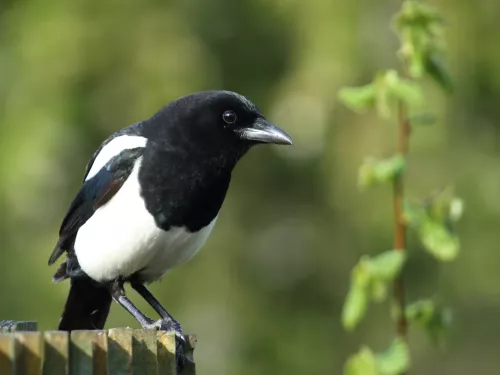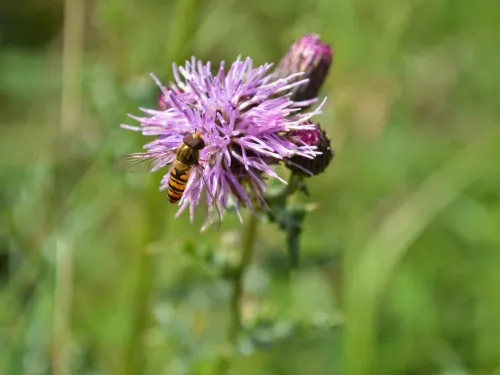Lumpsucker
This funny-looking fish certainly won't be winning any beauty pageants, but it's a real contender for Father of the Year!
This funny-looking fish certainly won't be winning any beauty pageants, but it's a real contender for Father of the Year!
Mackerel are a sign of summer's arrival, when they appear inshore in huge numbers all around the UK. As well as being a sustainable seafood choice, they are an important food source for many of our marine predators.

"One for sorrow, two for joy…" is a popular rhyme associated with the magpie - a bird of much myth and legend. An unmistakeable member of the crow family, it can be seen almost anywhere.
The magpie is a distinctive moth with striking black and yellow spots on white wings. It is a frequent garden visitor, but also likes woodland, scrub and heathland.
A small, tufted fern, maidenhair spleenwort can be found growing out of crevices between rocks, in walls and on mossy branches across the UK.
A classic fern of woodlands across the UK, the male-fern is also a great addition to any garden. It grows impressive stands from underground rhizomes, dying back in autumn.
The much-loved mallard is our most familiar duck, found across town and country. If your feeding the ducks please don't feed them bread - it's not good for them! Instead, they love eating sweetcorn, lettuce, oats and seeds.
A pretty and distinctive little waterbird, the mandarin duck was introduced from the Far East as its name suggests. Oddly for a duck, it nests in trees, sometimes high above the water.
The striking black-and-white checks of the marbled white are unmistakeable. Watch out for it alighting on purple flowers, such as field scabious, on chalk and limestone grasslands and along woodland rides.

Our most common hoverfly, the marmalade fly is orange with black bands across its body. It feeds on flowers like tansy, ragwort and cow parsley in gardens, hedgerows, parks and woodlands.
The dense, spiky tufts of Marram grass are a familiar sight on our windswept coasts. In fact, its matted roots help to stabilise sand dunes, allowing them to grow up and become colonised by other species.
Look for the deep magenta, star-shaped flowers of Marsh cinquefoil in marshes, bogs, fens and wetlands in the north, west and east of the UK.